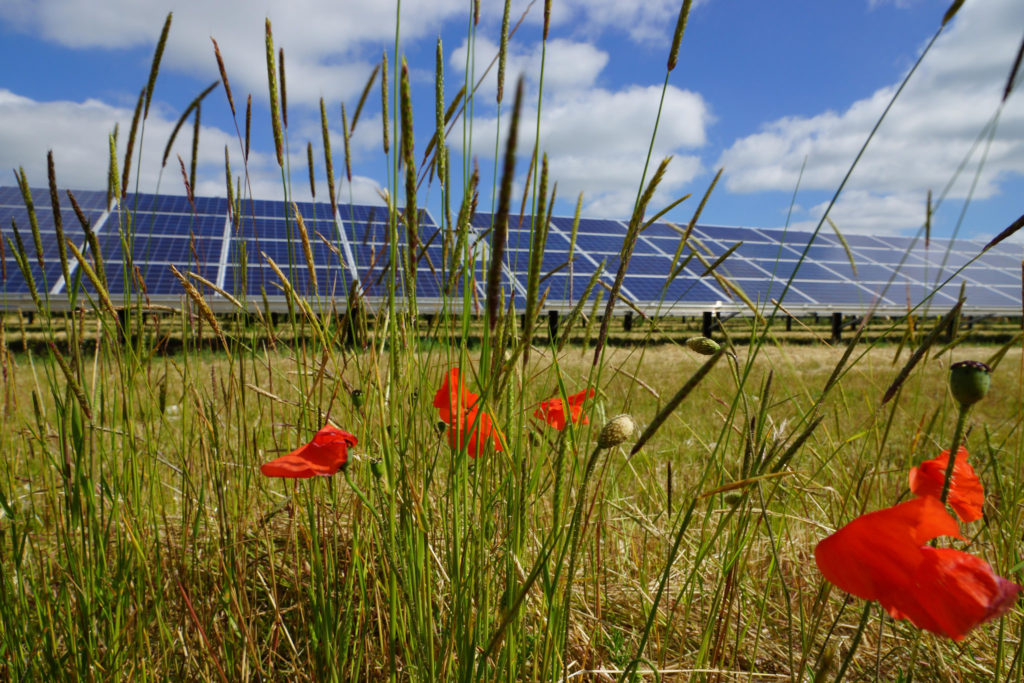Interesting numbers in a poll commissioned by sPower — a clean energy firm looking to build a 6,000 acre solar energy facility in western Spotsylvania County — which indicates that the project itself, despite seeing sharp opposition from local neighbors and property owners, is considered a positive step forward.
The Free Lance-Star’s Scott Shenk has done yeoman’s work outlining the project and the controversy surrounding it. The project as currently envisioned would be the largest of its kind on the East Coast, encompassing 10 square miles, over 2 million panels, and generating 500 megawatts of energy. For comparison purposes, the two nuclear reactors at North Anna generate 1.79 gigawatts at a campus just half the size. Dominion Energy has also gotten into the game with a 250 acre campus generating about 20 megawatts. Needless to say, clean energy seems to be on the march.
Yet local residents in western Spotsylvania have pushed back, stating that the project not only would prove an eyesore. Worse still, the assessed value of the land currently would produce $700,000 in today’s tax revenue, compared to the paltry $600,000 per year that state tax breaks would guarantee to sPower for the next 35 years by virtue of being a clean energy project.
There are other considerations as well, both environmental and aesthetic. For one, while such massive solar projects exist on the West Coast, they tend to be in unpopulated deserts where few people notice their existence, thus reducing the potential impact should one of the panels shatters or breaks. Thus the environmental concerns become a factor, as the sPower project initially sought to lean upon local aquifers in order to clean the solar arrays periodically. There is also the additional concern about cleaning up and clearing out the solar cells when they outlive their usefulness or practicality.
Yet to date, sPower has committed itself to resolving those issues. The project has already agreed to expend $7 million by using county water supplies rather than local water resources — a costly but environmentally friendly concession. A $26 million decommissioning bond has been authorized once the solar cells outlive their usefulness.
None of these has calmed the concerns of Protect Spotsylvania, a citizen-led group organized to push back and apply pressure to the Spotsylvania Board of Supervisors to reject the deal. Yet a new poll from Public Opinion Strategies commissioned by sPower shows that Protect Spotsylvania may have a longer road to go if the clean energy project is to be rejected in toto.
Of the residents polled, over 59% have heard of the project thus far, which means the project has reached a certain degree of saturation within Spotsylvania. When asked if they support the massive project, 67% indicated that they would against just 27% opposed — and of that, 49% of Spotsylvania voters indicated that they strongly supported the solar energy project.
“We are very happy to see that residents overwhelmingly want the Spotsylvania Solar Energy Center in the county,” said Daniel Menahem, senior manager of solar development for sPower. “We have been working closely with county officials over the last year to make sure this project is a good fit for Spotsylvania. Solar is the future of energy development and production in this country and this project will put Spotsylvania County at the forefront of both the tech industry and this rapidly growing energy source.”
The poll, conducted December 15th through 17th, surveyed 400 registered voters in Spotsylvania County with a margin of error of 4.9 percent. Sixty-six percent of respondents also said they believe the county is on the right track, and 63 percent approve of the job the Board of Supervisors is doing. Additionally, the poll found that 61 percent of voters prefer the solar project over another type of development on the land, while only 16 percent prefer a residential development and 15 percent an industrial development.
Of course, such numbers will do little to mollify the concerns of those who live near the proposed 10 square mile project, who fear not only the environmental concerns but the drop in their property values as well. From the FLS:
The Concerned Citizens of Spotsylvania County group has provided information it says proves the project will not be beneficial to the county. One of its members, Fawn Lake resident Sean Fogarty, recently gave supervisors a list of concerns that included negative impacts to tax revenue and home values.
“The Fawn Lake developer has already stated their intentions to sell at least 74 of their residential lots to sPower, which would result in a loss of approximately $276,000 in anticipated county real estate tax revenue per year,” he wrote. “Additionally it is anticipated that homes bordering the project will suffer a drop in assessed value resulting in a reduction in real estate tax revenue from those homes.”
Of course, rarely are such projects approved by the masses who have an abstract idea of what the project entails. Sometimes, the consistent work of a concerned minority is enough to keep what would be the largest solar energy project on the East Coast a 6,000 acre tract of trees. Such are the dichotomies in today’s drive for clean energy.

